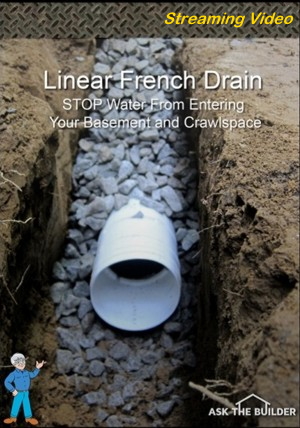Foundation Joint Seal
Craig Stockman is a little late to the party with his question. He lives in Billings, MT and should have come to me about two weeks before the foundation contractor showed up at his house. Read what Craig wrote:
"I had a foundation poured for an addition to our house. What I was wondering was how do I seal the point where the two foundation walls meet? Seems like the point that water may potentially enter would be that point. Thanks for all the help."
This is a classic case of not thinking through issues before you get started on a job. Here's my answer: Craig, what a shame! I've poured many a foundation up against an existing foundation and you bet that joint can be a problem. That's why a few companies developed clever L-shaped rubber ribbed seals that are made to waterproof this construction detail. The trouble is, it should have been installed before the pour. It's impossible to install it now. The foundation contractor would have cleaned off your existing foundation where the new foundation was going to contact it. He would have gotten the existing foundation perfectly clean and dry. Then the L-shaped flashing would have been fastened to the existing foundation. It's embedded in a special caulk that adheres to the existing foundation. Number 5 steel rebar is also incorporated and drilled into the existing foundation to lock the new to the old. The portion of the flashing that sticks into the new addition foundation has ridges on it that the concrete flows around making a waterproof seal. At this point all you can do is coat the seam with a special sealant that might work.
You should also install one of my Linear French Drains as DEEP as the slope of your land will allow. ORDER my Streaming Video now about Linear French Drains.

2 Responses to Foundation Joint Seal